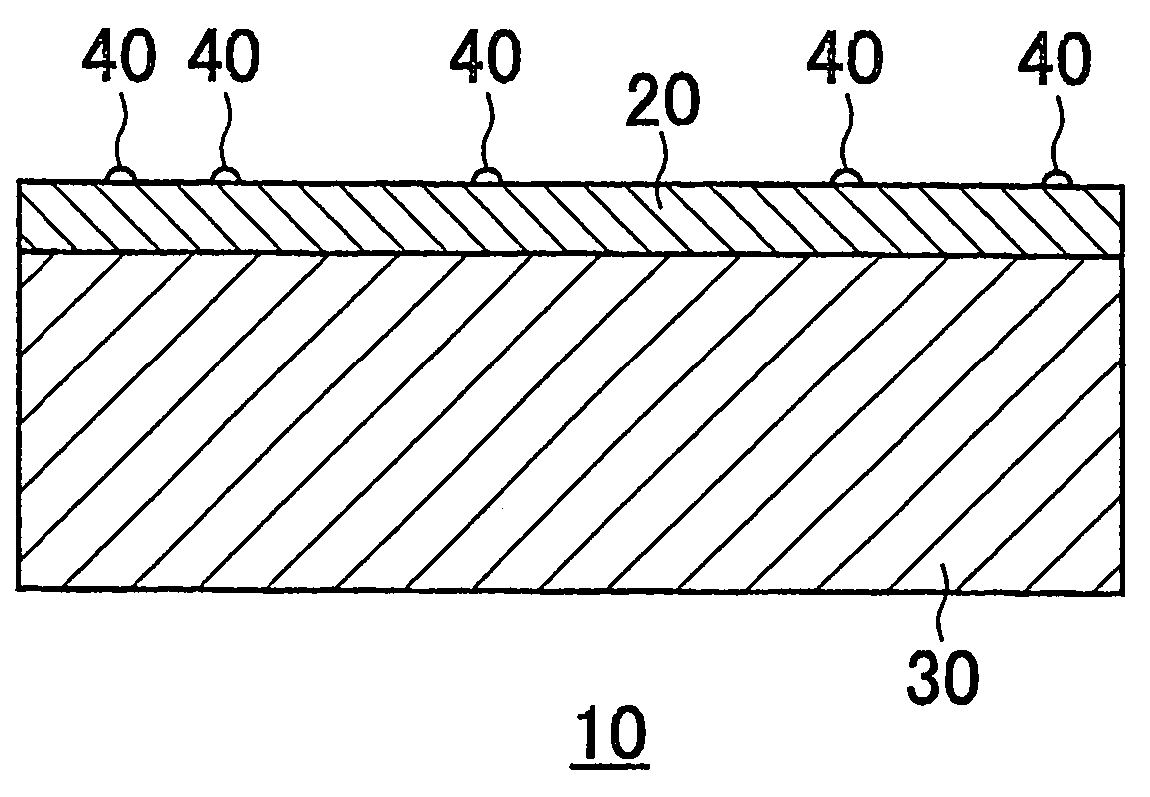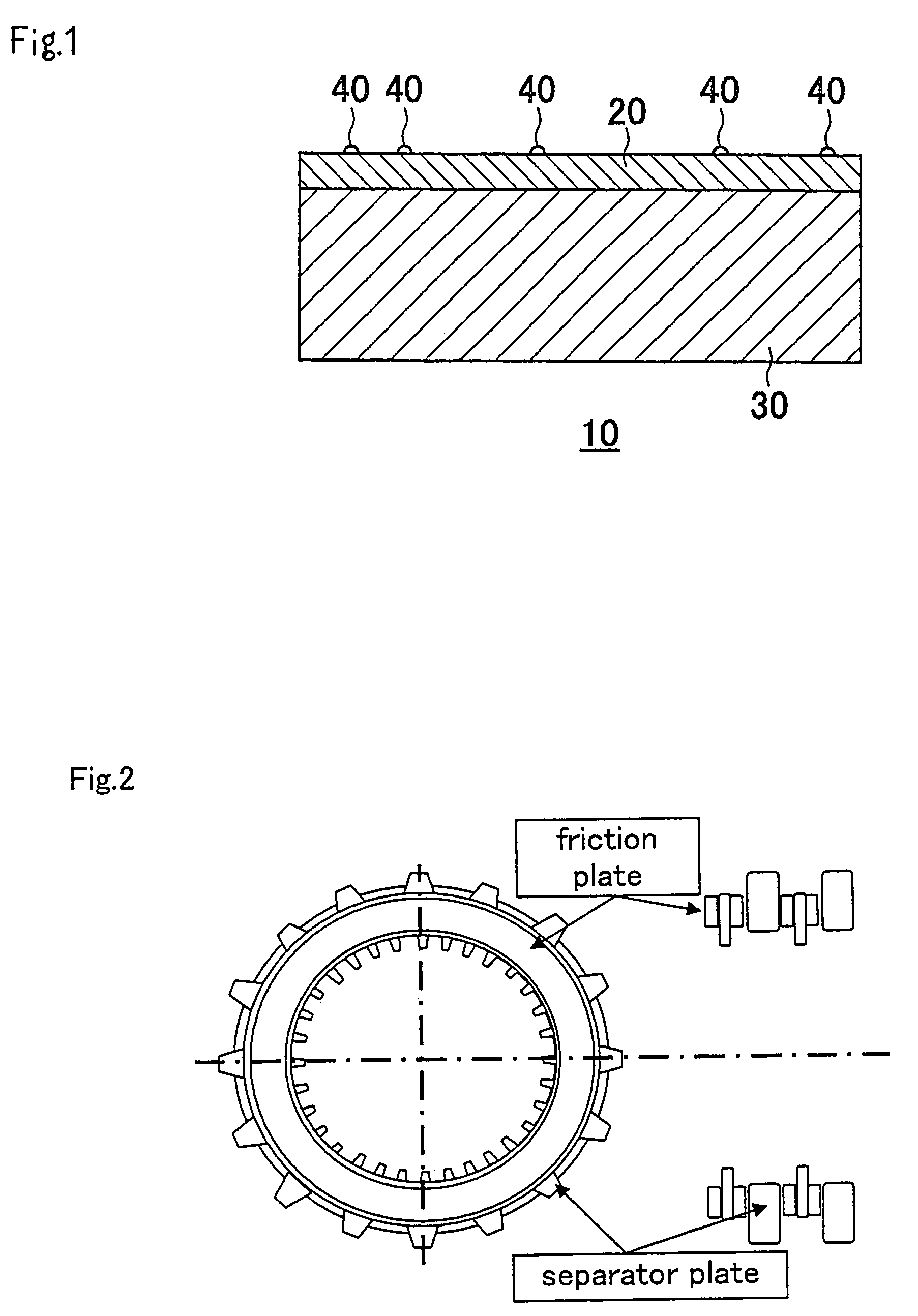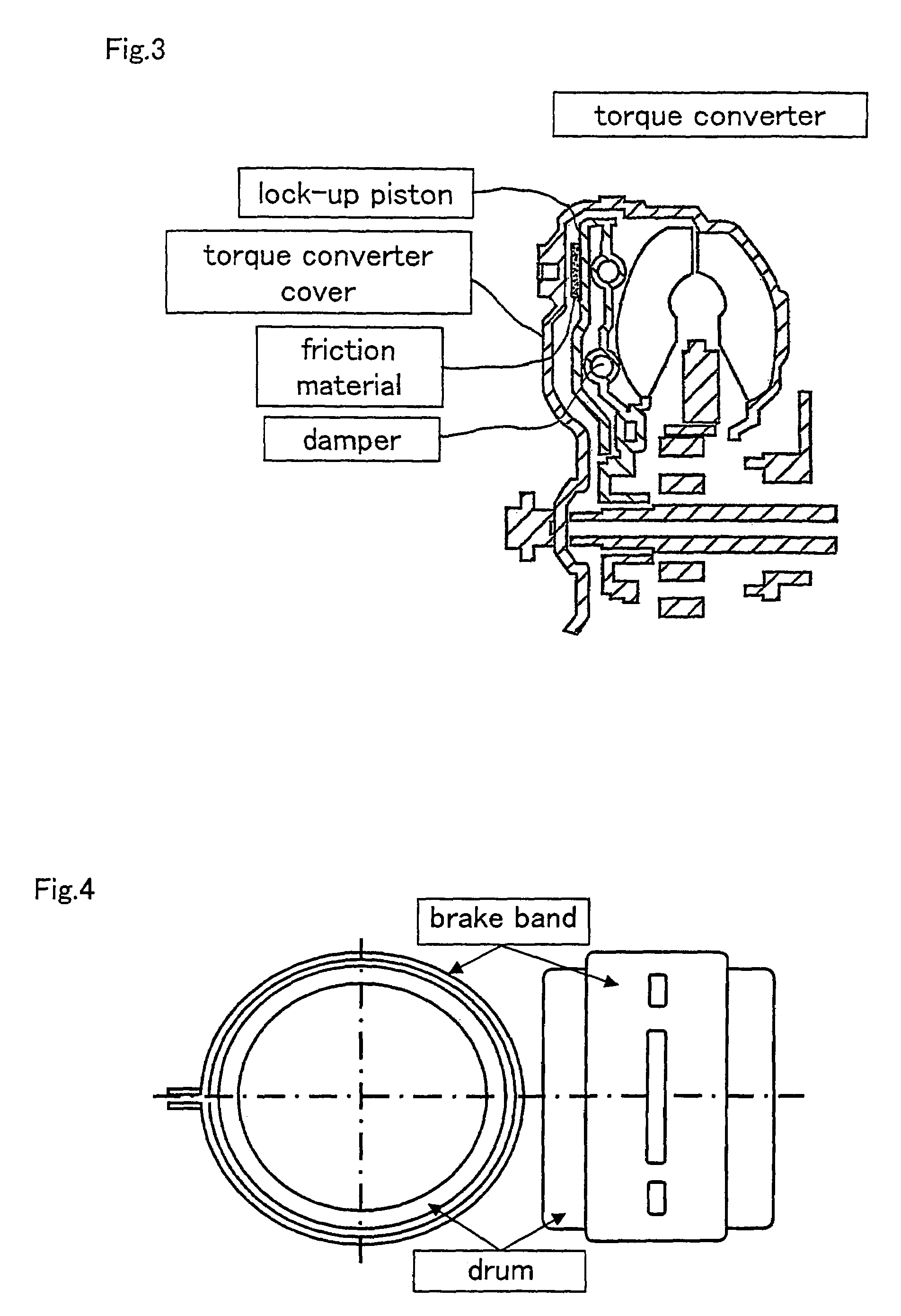Hard-faced friction mating member
a friction mating member and hard-face technology, applied in the field of contact parts, can solve the problems of unstable friction coefficient between the friction member and the friction mating member, noise and vibration generation, and change of friction coefficient, and achieve the effects of small friction coefficient, high speed range, and increased friction coefficien
- Summary
- Abstract
- Description
- Claims
- Application Information
AI Technical Summary
Benefits of technology
Problems solved by technology
Method used
Image
Examples
examples
[0030]The friction mating member of the Example in accordance with the invention was fabricated from a base member having a ground surface finished by polishing with a polishing compound. The ground and polished surface of the base member was coated with a hard coating of a composite material containing amorphous carbon and tungsten carbide.
[0031]In Comparative example 1, a friction mating member in was fabricated by coating a surface of a base member with a chromium or TiN coating.
[0032]In Comparative example 2, a friction mating member the ratio of the area of semispherical protrusions to the area of the surface of a coating applied to the surface of a base member was small.
[0033]In Comparative example 3, a friction mating member included a base member having a high degree of surface roughness.
[0034]In Comparative example 4, the friction member, which was a currently mass-produced friction mating member, was made simply by grinding a surface of a base member, with no application o...
PUM
| Property | Measurement | Unit |
|---|---|---|
| surface roughness Ra | aaaaa | aaaaa |
| surface roughness Ra | aaaaa | aaaaa |
| diameters | aaaaa | aaaaa |
Abstract
Description
Claims
Application Information
 Login to View More
Login to View More - R&D
- Intellectual Property
- Life Sciences
- Materials
- Tech Scout
- Unparalleled Data Quality
- Higher Quality Content
- 60% Fewer Hallucinations
Browse by: Latest US Patents, China's latest patents, Technical Efficacy Thesaurus, Application Domain, Technology Topic, Popular Technical Reports.
© 2025 PatSnap. All rights reserved.Legal|Privacy policy|Modern Slavery Act Transparency Statement|Sitemap|About US| Contact US: help@patsnap.com



